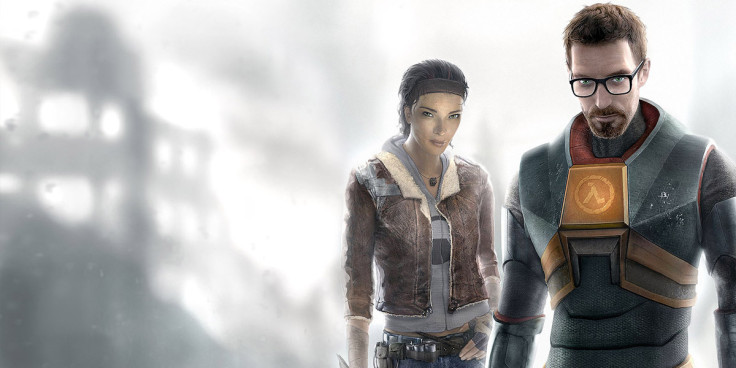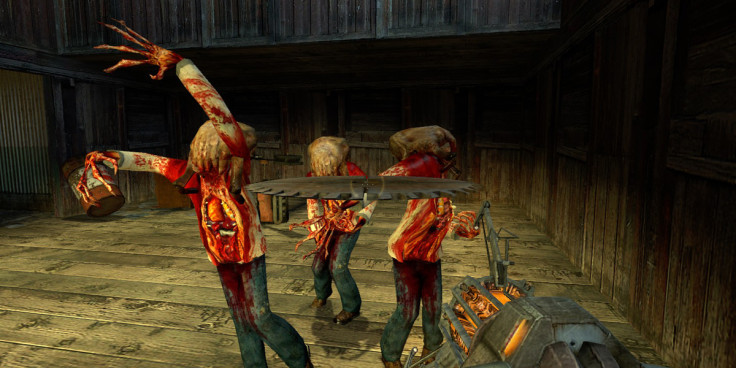Half Life 2 10th Anniversary - Has Valve's Classic Been Bettered?

Hype can be a dangerous force of nature, but meet and exceed lofty expectations and there's no surer way of becoming a classic. Few games ever live up to such anticipation, but six years on from its genre-defining original, Half Life 2 managed to do exactly that.
Sunday (16 November) marks a decade since the release of Half Life 2 and in those 10 years the series has taken on an almost mythical quality. In part this is because of the lingering lack of a follow-up to 2007's Half Life 2: Episode 2, but also because of the undoubted quality of the sequel and the small matter that no game since has matched it.
The first person shooter (FPS) genre is a busy one. So busy that it's hard for any one game to stand out as truly special. Only two come close to matching Half Life 2's cultural impact over the past decade: Call of Duty 4: Modern Warfare and Bioshock, but neither is as perfectly designed.
Other defining series have helped evolve FPS games - Wolfenstein, Doom, Quake, Halo - but unlike many of the iterations that fall under each of those titles, Half Life 2 is a perfect distillation of the genre - a measured and monumental masterpiece.

Quite how much of a factor luck and happenstance are in creating works of such quality can be debated, but it certainly is an aspect of all great design. Half Life 2 is a prime example of why this is even a debate. It's such a flawlessly designed game from top to bottom that everything about it appears to have been crafted with an assiduous attention to detail.
"So, wake up, Mister Freeman. Wake up and... smell the ashes."
It begins on a train entering City 17 - Earth's home of prospective interdimensional conquerors the Combine - whose plans begin with the oppression of humanity. Around you moping citizens speak in a defeatist manner and the walls are worn with paling colours - it is a succession of depressing sights setting the bleak tone.
An underground revolutionary movement, unbeknownst to them, awaits Freeman's arrival. Familiar faces welcome you back but it's a new face - that of companion Alyx Vance - that you'll share most of your adventure with.

It's a simple story told with great performances but the true triumph of Half Life 2 is in the world it creates and the player's movement through it.
Gordon Freeman is at once The Free Man who will liberate a people and stop the combine, but also a puppet whose strings are being pulled by the mysterious G-Man. Likewise the player feels free when moving through the game's world, but is always being gently pulled through it by the force of events and Valve's own supreme design.
The Gravity Gun (or Zero Point Energy Field Manipulator if you're Dr Kleiner) is something else embedded in Half Life 2's legend. A weapon that brilliantly exploited the physics of Valve's new Source Engine - which the game debuted. A substancial upgrade you receive for it towards the game's end remains one of the more empowering moments in gaming.
"Man of few words, aren't you?"
Like a favourite film, you can return to Half Life 2 at any time and feel instantly comforted. You know it - completing it a third, fourth or fifth time is a breeze - but it remains enjoyable because this isn't a game replayed for the challenge, it's one replayed for the experience.
Bioshock's Rapture is an almighty creation, but mechanically Irrational's classic isn't a patch on Half Life 2. Call of Duty 4 has finely-tuned action in spades but not the smarts and measured pace of Valve's classic.
Gordon Freeman's second outing was just as revolutionary as his first, and is held in even higher regard. It managed this despite the hype and anticipation of a six year wait that had an industry salivating.
Seven years on from Episode 2 expectations for the next in the series are as high as ever, but if any game can please those begging for a quality return, it's Half Life.

© Copyright IBTimes 2025. All rights reserved.






















